- To move slides, use the arrow keys or swipe on your mobile device
- To see the speaker notes, press "s"
- To go to full screen, press "f"
- To print as PDF, go to this URL: ?print-pdf, then print.
- To get a PDF with speaker notes, add ?print-pdf&showNotes=true to the URL.

Star Formation and Mass Measurements in the Galaxy
Adam Ginsburg
Assistant Professor
Department of Astronomy
University of Florida, Gainesville
- Postdoc: Allison Towner
- PhD: Desmond Jeff, Theo Richardson, Alyssa Bulatek, Nazar Budaiev, Savannah Gramze, Taehwa Yoo
- Undergrad: Derod Deal, Brice Tingle, Morgan Himes, Aden Dawson, Brighten Jiang
Collaborators:
John Bally, Ashley Barnes, Cara Battersby,
Roberto Galván-Madrid,
Jonathan Henshaw, J. M. Diederik
Kruijssen, Steven Longmore, Xing Lu, Fanyi Meng, Elisabeth A.C.
Mills, Juergen Ott, Álvaro Sánchez-Monge,
Peter Schilke, Daniel Walker, Erik Rosolowsky, Eric Koch, Ciriaco
Goddi, Brett McGuire, Dick Plambeck, Melvyn Wright,
Henrik Beuther, Kei Tanaka, Yichen Zhang,
the ALMA-IMF team (Timea Csengeri, Fabien Louvet,
Nichol Cunningham, Frederique Motte, Patricio Sanhueza, Thomas
Nony, Yohan Pouteau, Melisse Bonfand, Fernando Olguin, Sylvain Bontemps, and
many others)
Slides available at
https://keflavich.github.io/talks/colloquium_Nov2022_Cagliari.html
Job Ad!
I'm hiring a postdoc:jobregister.aas.org/ad/7d9cafa5
explore.jobs.ufl.edu/en-us/job/522968/postdoctoral-associate-in-galactic-star-formation-almajwst
For 1 week, short version: small.cat/kind
Summary
Most stars form in regions unlike the solar neighborhood
- Greater clustering, higher SF thresholds in denser clouds
- Shallower CMF in richer SF regions
- The Galactic Center forms more stars in clusters
We have, and are building more, tools to measure masses
- ALMA-IMF core catalogs with high-resolution followup & modeling
- Hot cores track the earliest stage of HMSF
- Salt is a new tool to probe disks around high-mass stars
Other odds & ends: Masers, dasars, and salts
Star formation drives the evolution of the universe
Star Formation oversimplified
Ṁ
The star formation rate, i.e., how much gas turns to stars
L / M
The light per unit mass, i.e., how stars and stellar populations turn matter into light
High-mass stars produce photons & heavy elements
low-mass stars live practically forever
Point color shows effective temperature, point size shows luminosity (left) and mass (right)
The stellar initial mass function (IMF)
Stars are sampled from this distribution
Almost all of the light in star-forming galaxies is produced by high-mass stars
The stars form in and from gas (as traced by dust)
Most of what we know of star formation in detail comes from small local clouds
Most of what we know of star formation in detail comes from small local clouds
Cartoon of isolated low-mass star formation
A molecular cloud fragments
The core forms a central protostar
The protostar heats its parent core and forms a disk
It drives an outflow and consumes (or runs from or blows out) its core
Eventually, you end with just a star-disk system
Cartoon of isolated low-mass star formation
The isolated cartoon is wrong in several ways
Hot cores cook their neighbors. Cores fragment.
Most of what we know of star formation in detail comes from small local clouds
They contain only low-mass stars and do not represent star formation in general
Most stars form in denser regions




FOV: 0.07 pc (16000 AU)
72 YSOs
one "hot core"
N*OMC(Otter+ 2021) = 1.6 x 105 pc-3
N*ONC(Otter+ 2021) = 0.6 x 105 pc-3
N*ONC(Hillenbrand+ 1998) = 0.2 x 105 pc-3

Most stars form in denser regions
NGC 1333, an embedded low-mass cluster
Lada & Lada 2003: >70% in embedded clusters
Most stars form in denser regions
NGC 3603 is a high-mass (104 M⊙) cluster
Lada & Lada 2003:
5-10% in bound clusters
in our Galaxy
5-10% in bound clusters
in our Galaxy
SSCs are common in starburst nuclei and drive galactic outflows
NGC 253 protoclusters (Leroy+2018)
NGC 4945 protoclusters (Emig+2020)


Star formation drives the evolution of the universe
Most stars in most galaxies formed long ago
Galaxies were smaller & denser back then
 STSCI; Pappovich, Ferguson, Faber, Labbe
STSCI; Pappovich, Ferguson, Faber, Labbe
In denser (parts of) galaxies, more stars form in clusters
Γ is the fraction of stars forming in bound clusters
Galaxy averages
The "Bound Cluster Fraction" is predicted higher in the CMZ
Γ is the fraction of stars forming in bound clusters
Galaxy averages
CMZ prediction
The "Bound Cluster Fraction" is higher in CMZs
Γ is the fraction of stars forming in bound clusters
Galaxy averages
CMZ prediction
Sgr B2 data
Sgr B2 data
The "Bound Cluster Fraction" was higher in the past
Proto-cluster regions in our Galaxy sample conditions that were commonplace in the early universe

ALMA-IMF:
- 15 High-mass protoclusters probing young (few stars) to old (blowing out gas)
- Two ALMA bands looking at cold gas & dust
- Data published, analysis ongoing
ACES:
- The whole Galactic Center, with low-SF and high-SF clouds
- One ALMA band, biggest mosaic made.
- Data just starting to pour in
ALMA-IMF: CMF measurement & YSO counting
- Continuum data paper
(Ginsburg+ 2022, with big data reduction
team: Roberto Galvan-Madrid, Nichol Cunningham, Timea Csengeri,
Patricio Sanhueza, Fernando Olguin, Thomas Nony, Jordan Molet, Ana
Lopez, Yohan Pouteau, Andrez Guzman, Manuel Fernandez, Melisse
Bonfand)
- Self-calibration (10-500% dynamic range improvement), mosaicing, continuum selection
- Public mosaic self-calibration pipeline: https://github.com/ALMA-IMF/reduction/
- Survey overview (Motte+ 2022)
- Sample selection (evolutionary stages), highlights
- Shallow CMF in W43-MM2/3 (Pouteau+ 2022)
- CMF slope α ≲ 1
- 8 Hot Cores in W43 (Brouillet+) & ~60 more (Bonfand+)
- Line paper submitted (Cunningham+)
- SiO Outflow catalog under review (Towner+)
- 320 SiO outflows cataloged
- Catalog paper under review (Louvet+)
- ~1000 cores cataloged
ALMA-IMF data highlights


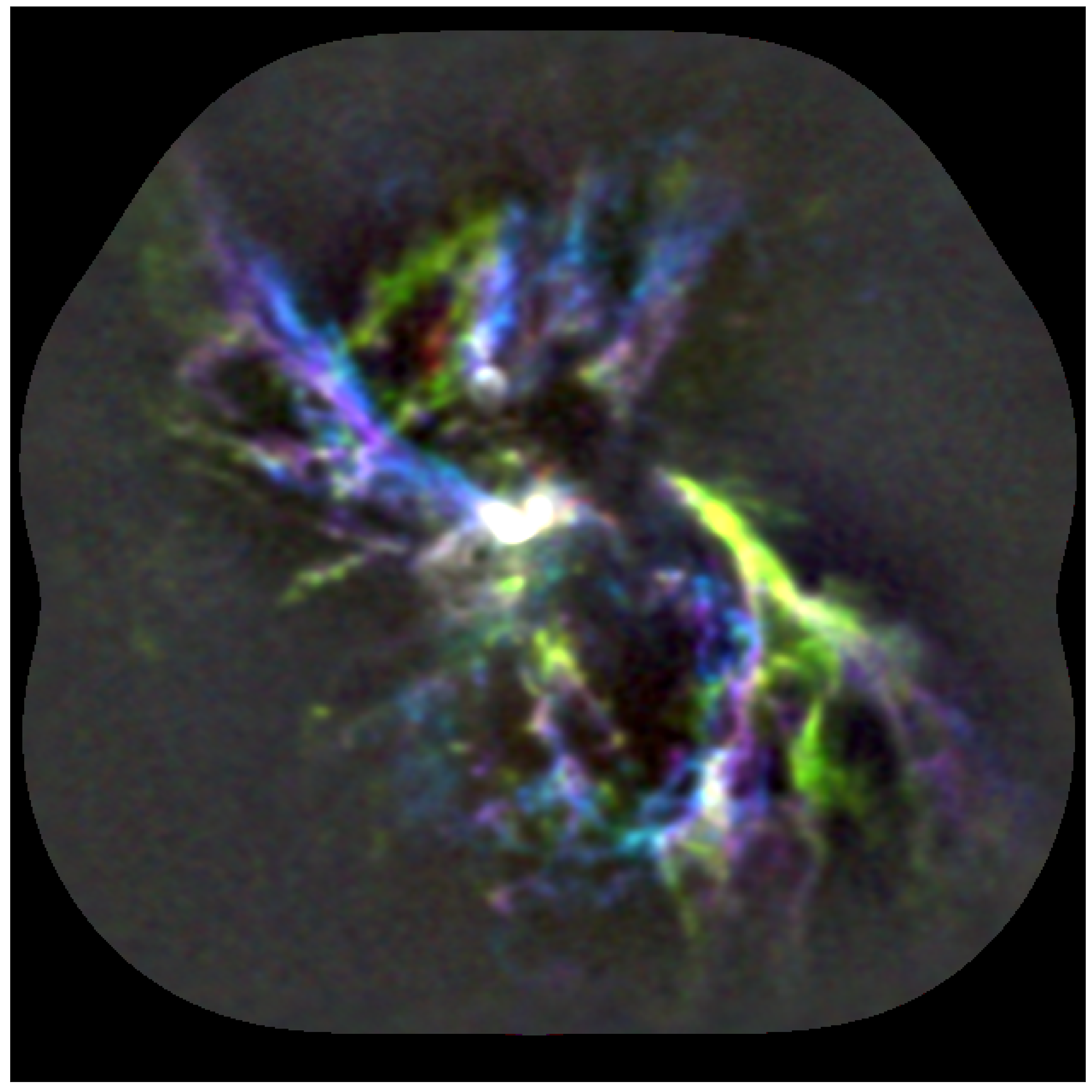




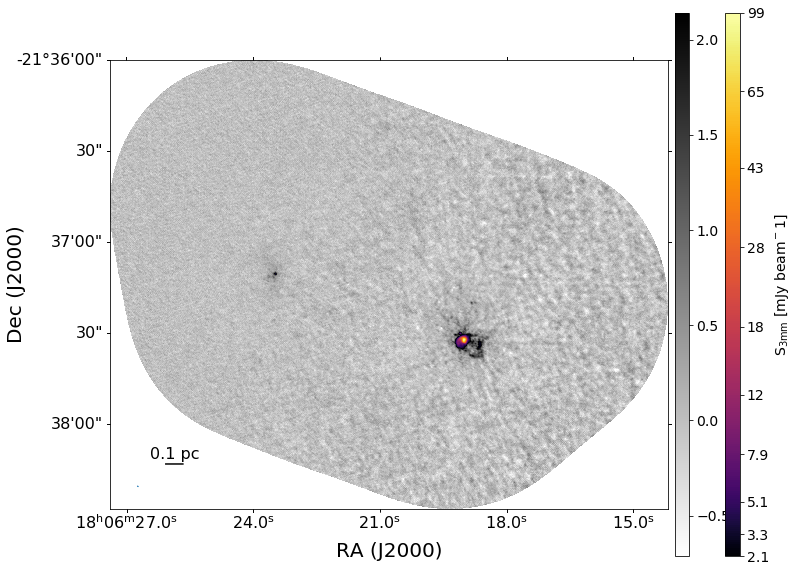




















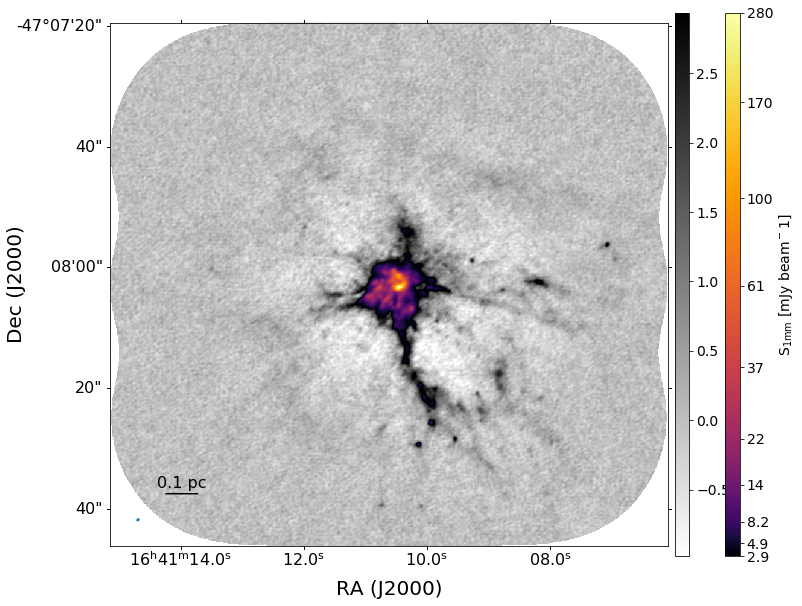
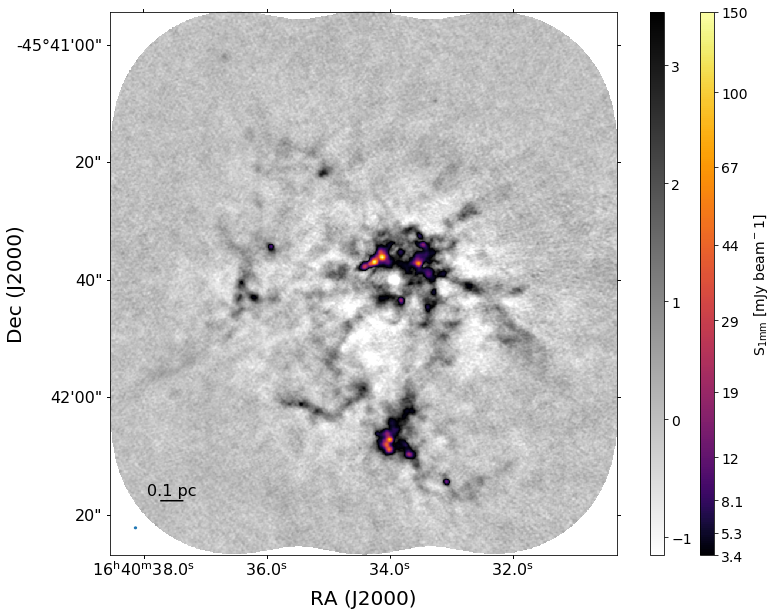







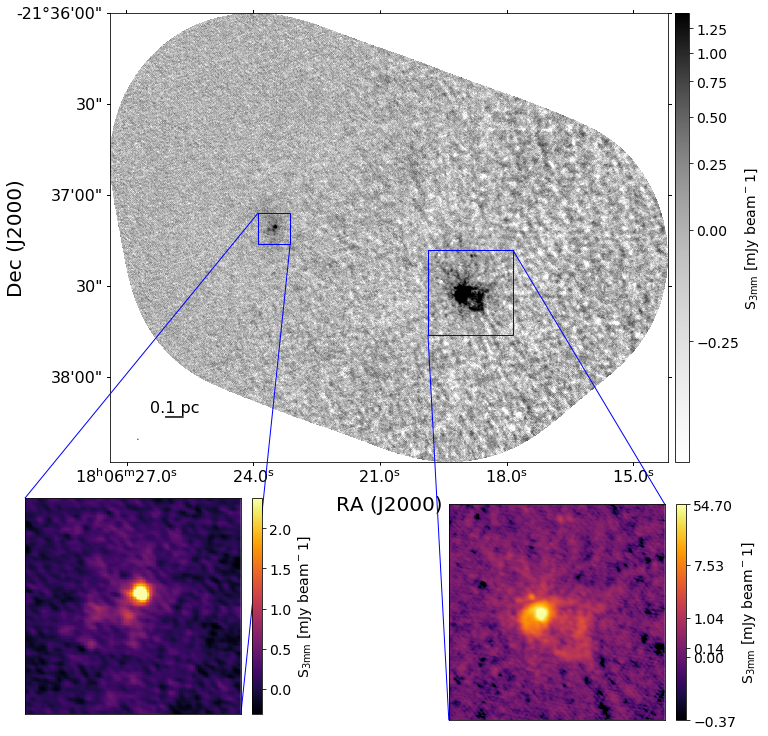


















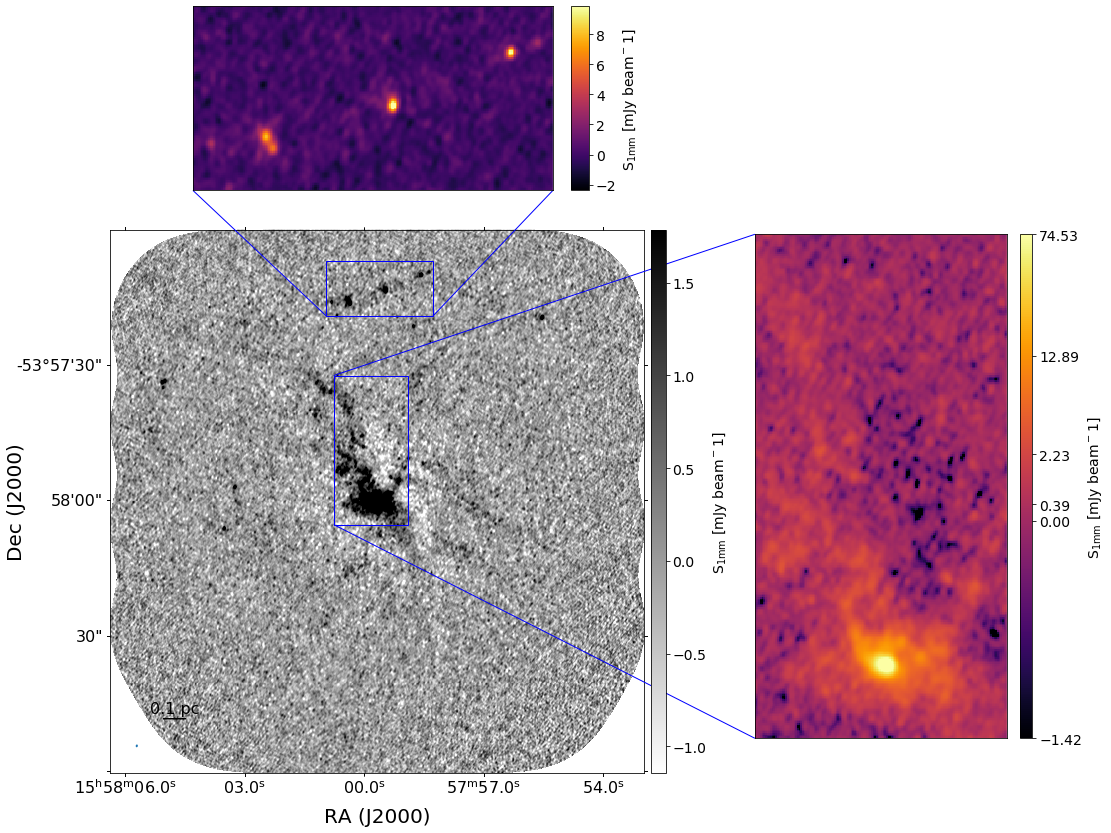



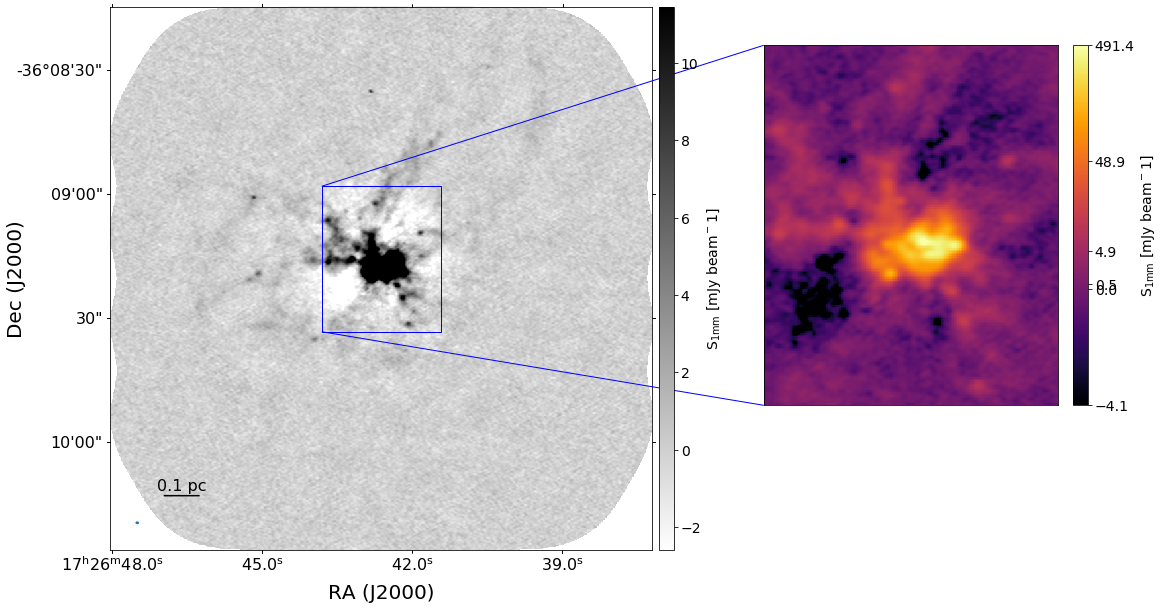







ALMA-IMF: Continuum Data → core catalogs

Pouteau+ 2022 W43-MM2/3
However, a core is not a core.
 ≠
≠
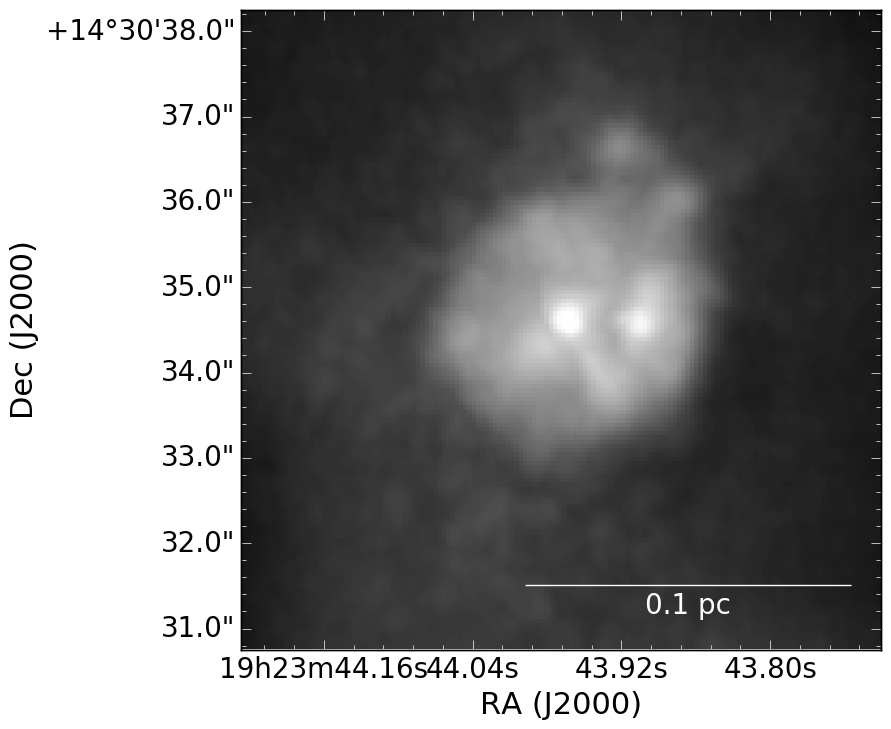


 Nazar Budaiev: Low-mass YSOs in Sgr B2M
Nazar Budaiev: Low-mass YSOs in Sgr B2M
49 at 0.5" →
169 at 0.05"

 Nazar Budaiev: Low-mass YSOs in Sgr B2M
Nazar Budaiev: Low-mass YSOs in Sgr B2M
49 at 0.5" →
169 at 0.05"



 Nazar Budaiev: Low-mass YSOs in Sgr B2N
Nazar Budaiev: Low-mass YSOs in Sgr B2N
26 at 0.5" →
209 at 0.05"

 Nazar Budaiev: Low-mass YSOs in Sgr B2N
Nazar Budaiev: Low-mass YSOs in Sgr B2N
26 at 0.5" →
209 at 0.05"

 At higher resolution, some cores contain clusters,
some are starless.
At higher resolution, some cores contain clusters,
some are starless.
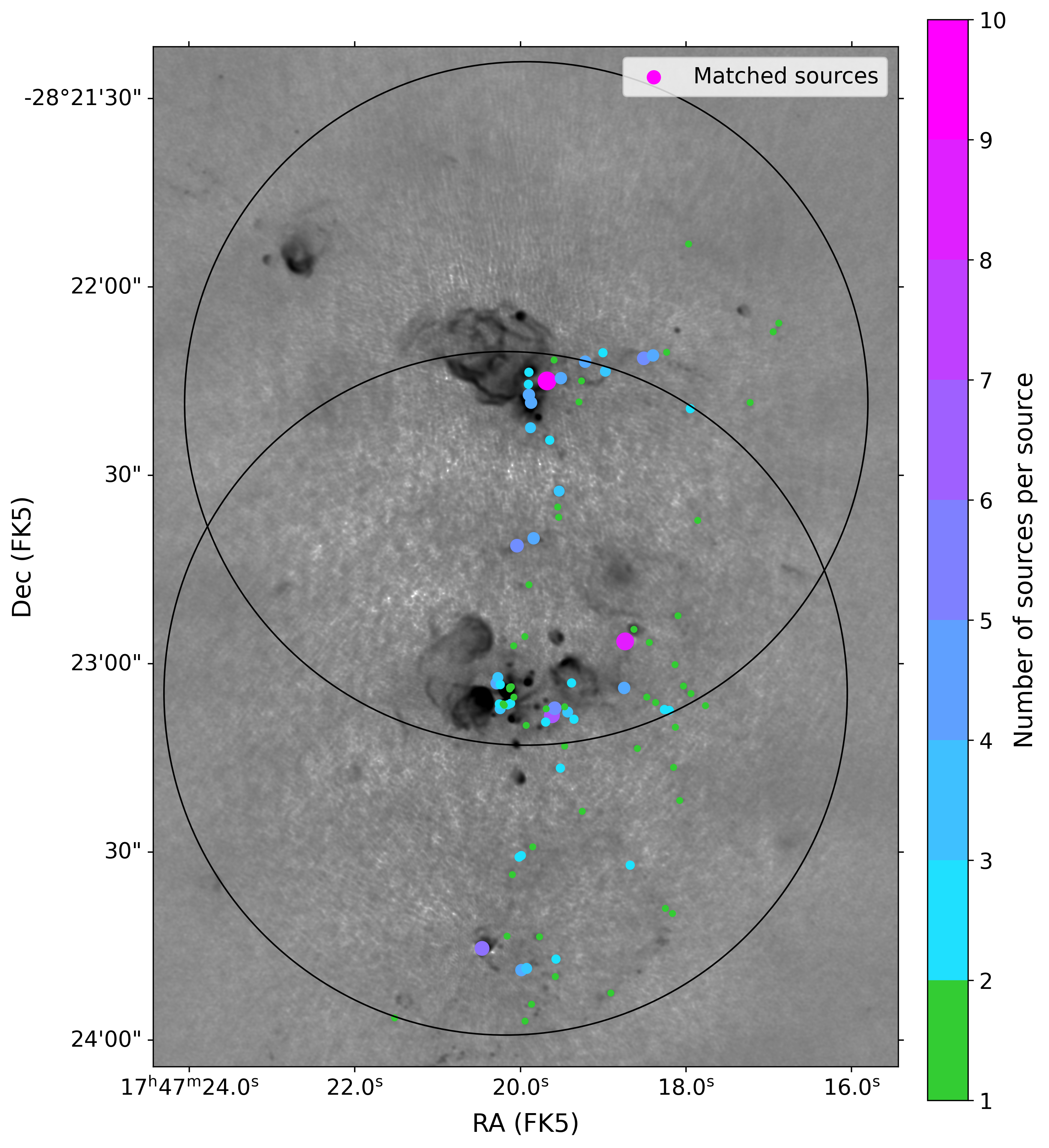
 At higher resolution, some cores contain clusters,
some are starless.
At higher resolution, some cores contain clusters,
some are starless.

 At higher resolution, some cores contain clusters,
some are starless.
At higher resolution, some cores contain clusters,
some are starless.

 At higher resolution, some cores contain clusters,
some are starless.
At higher resolution, some cores contain clusters,
some are starless.

 Taehwa Yoo will measure fragmentation toward W51
Taehwa Yoo will measure fragmentation toward W51
ALMA-IMF:
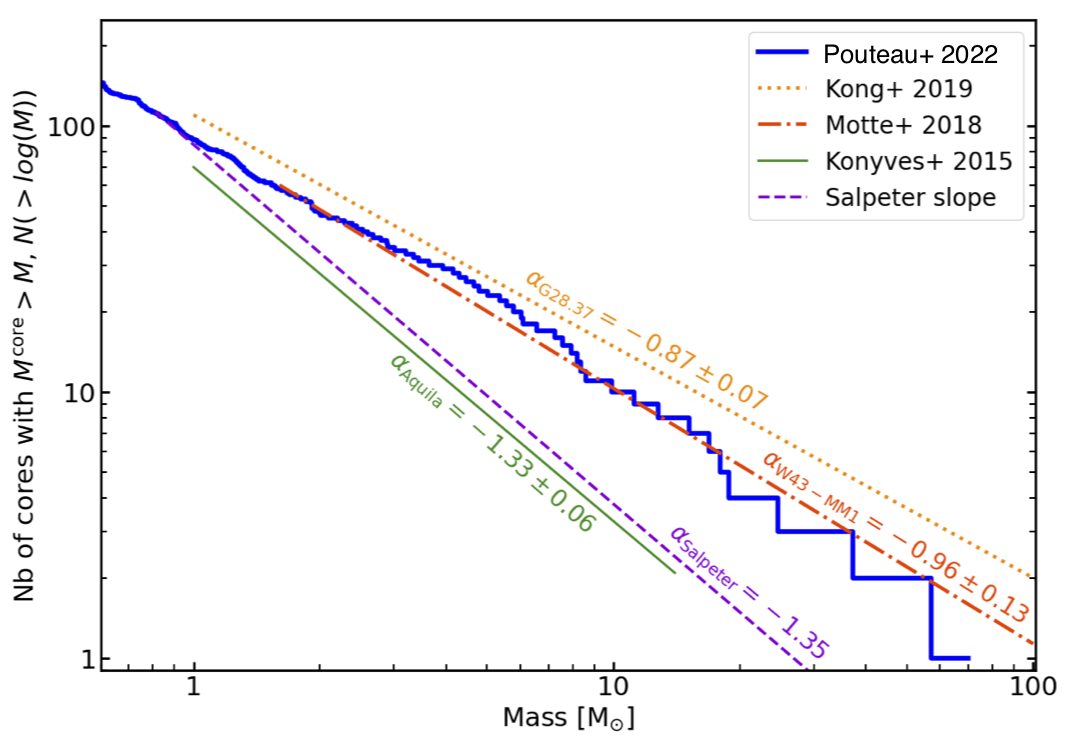
Top-heavier IMFs are seen in high-mass clusters,
ALMA-IMF:


 Allison Towner
Allison Towner






 Desmond Jeff:
Desmond Jeff:
Ten hot cores in Sgr B2 DS
TG ~ 200-500 K
M ~ 200 - 2900 M⊙
~7-10% of cores are hot cores

 Desmond Jeff:
Desmond Jeff:




Alyssa Bulatek: Spectral Line Survey of The Brick
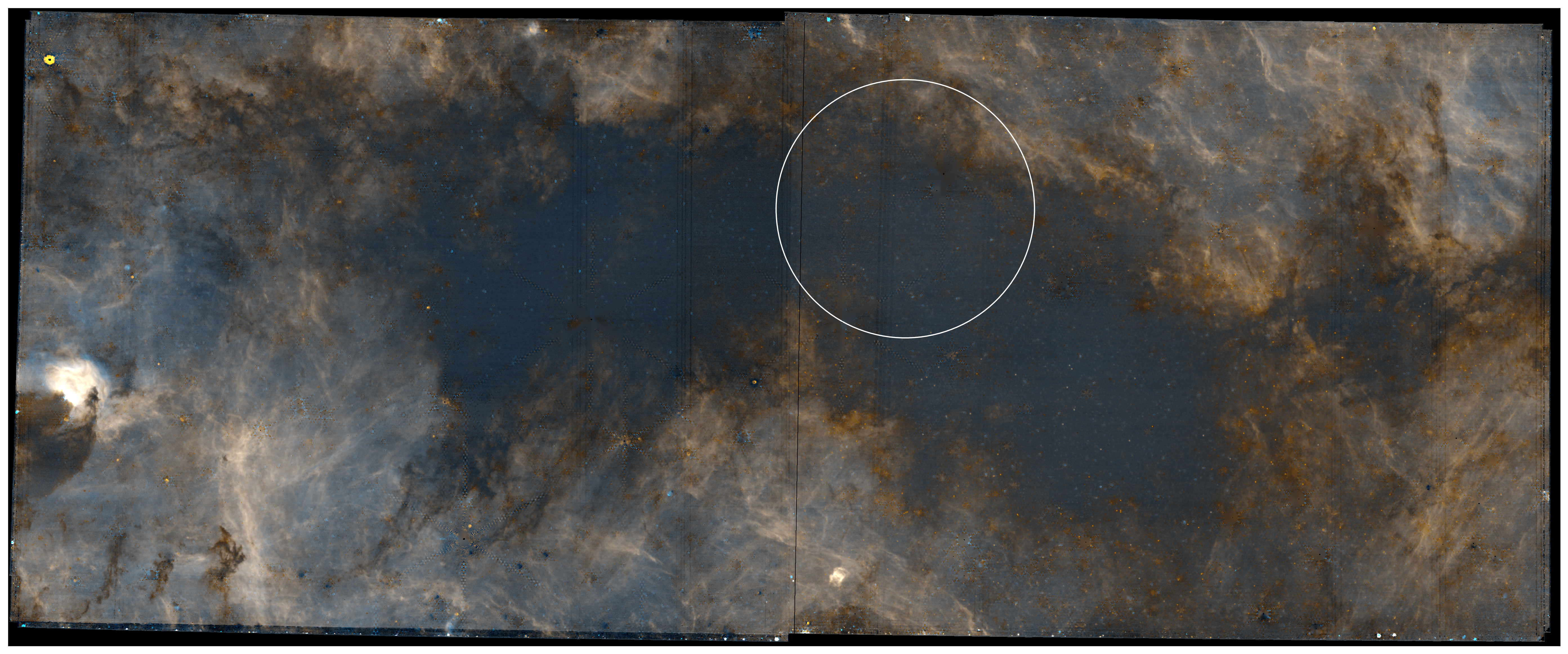






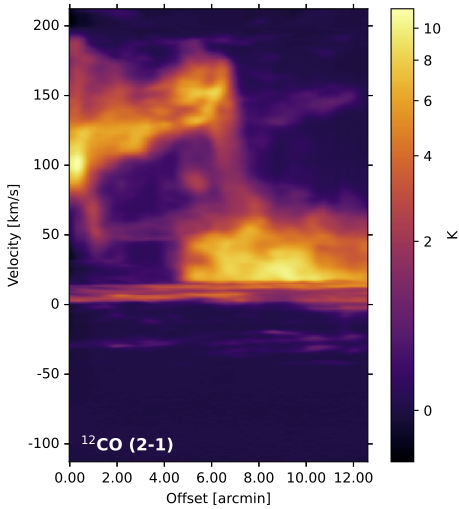

 Savannah Gramze
Savannah Gramze
Sormani & Barnes 2019 reported $\dot{M}_{acc}\sim2\mathrm{M}_\odot \mathrm{yr}^{-1}$
($\sim20\times\dot{M}_{SFR}$),
may be 10-20$\times$ lower (CO opacity revised)

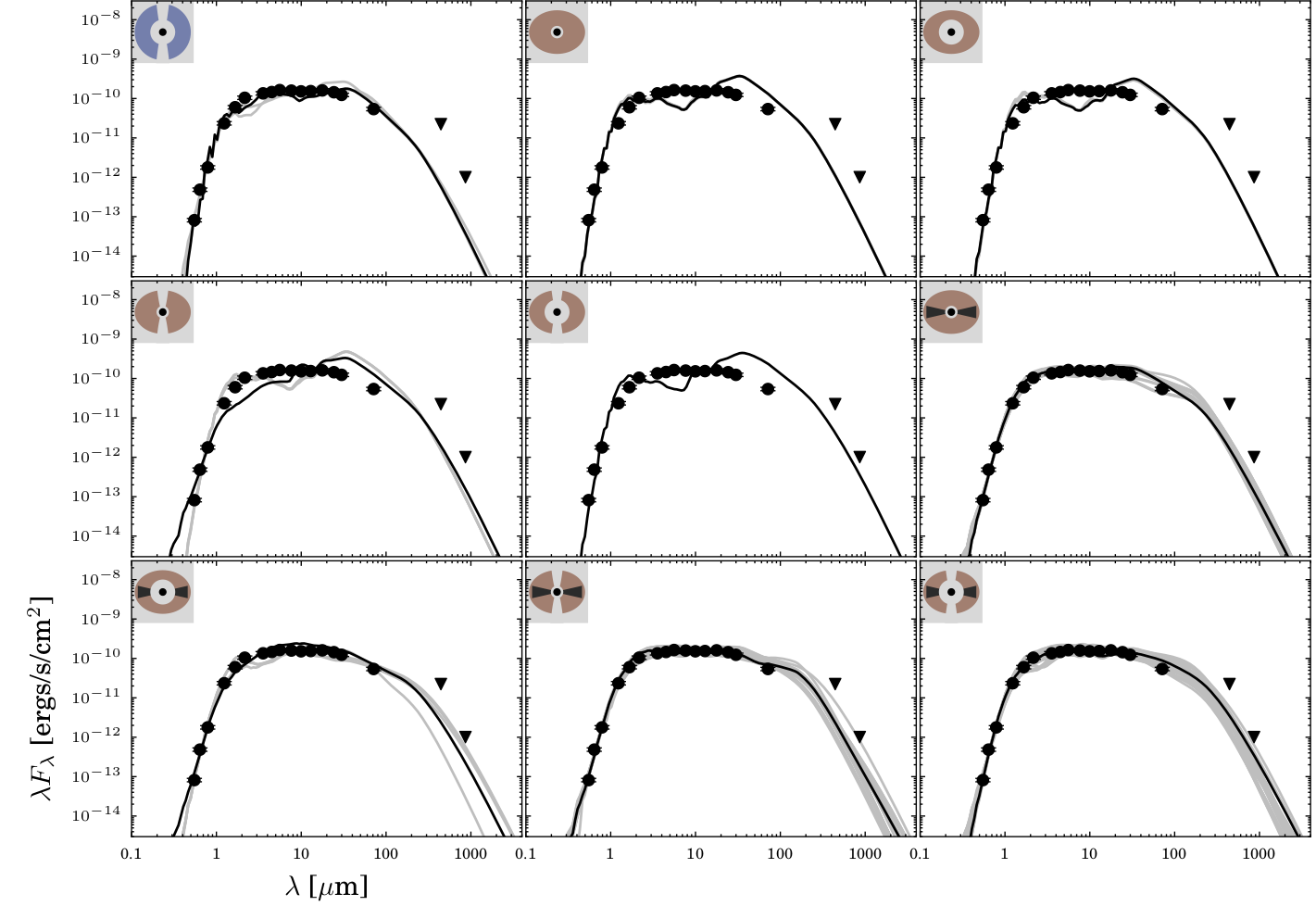
 Theo Richardson
Theo Richardson
Orion Source I



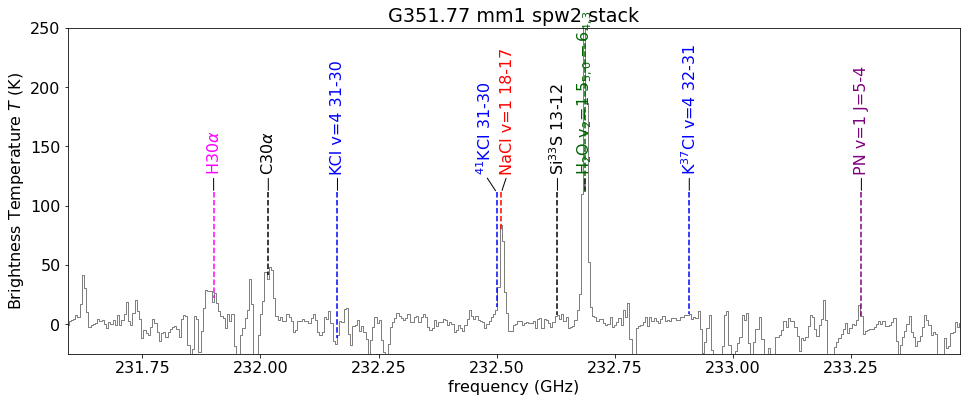




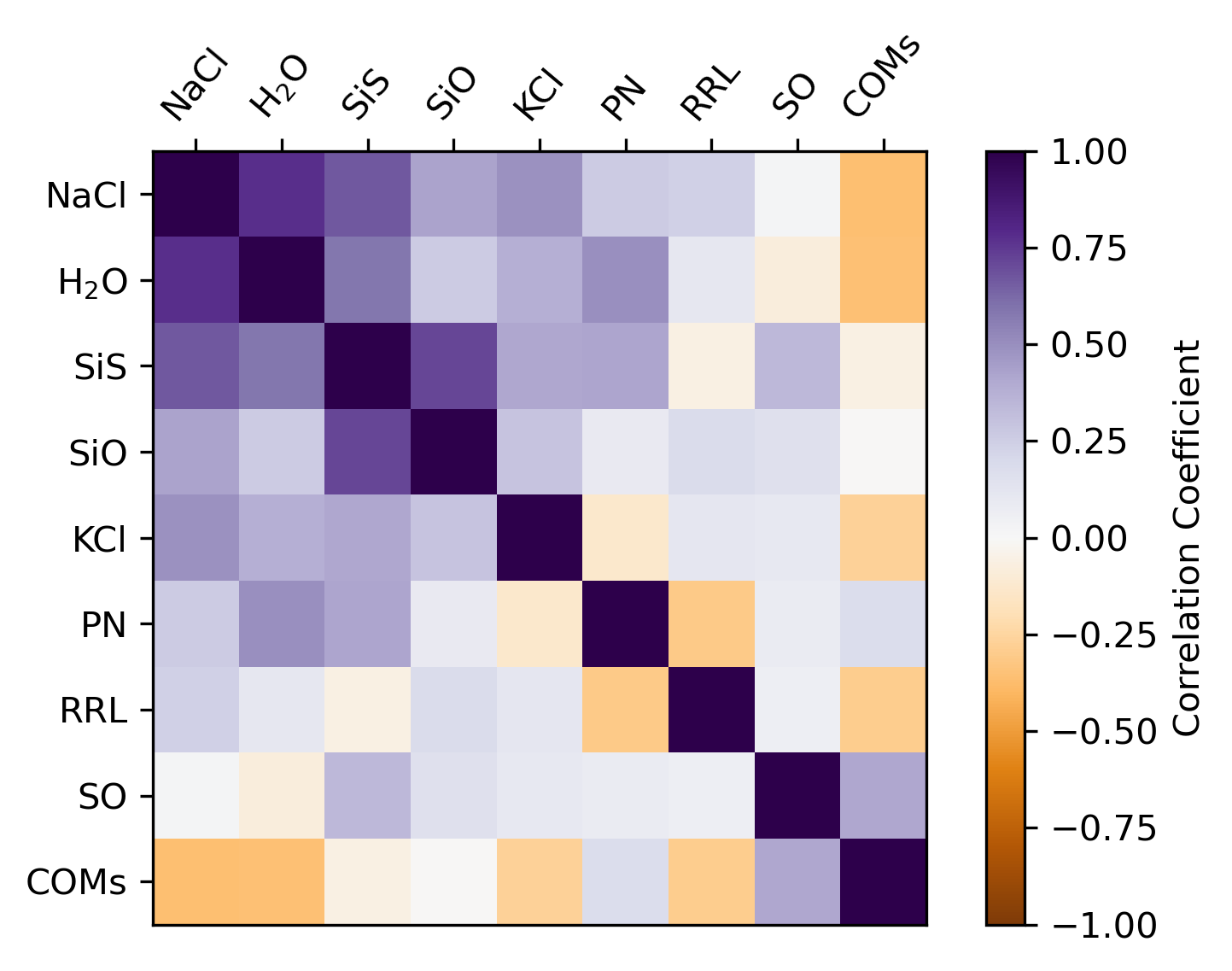


Most stars form in regions unlike the solar neighborhood
We have, and are building more, tools to measure masses
Other odds & ends: Masers, dasars, and salts

Salt backup slides
What's next for salts?
Deep VLA observations of low-J lines in Orion
PASHION - backup







Classic HII region feedback:
The Jeans Mass MJ is the mass where gravity and thermal pressure are balanced.
MJ ∝ T3/2 ρ−1/2







 Derod Deal
Derod Deal
Undergraduate. Precise NH3 maser locations in W51N

Large scales again:

ALMA enables protostar counting in









Classic model: a "core mass function" maps to the IMF
Many alternatives, no consensus on which is best
 ≠
≠

Cores change states

...but the naive version doesn't work
Fragmentation: Some cores contain many stars

 Nazar Budaiev: Low-mass YSOs in Sgr B2M
Nazar Budaiev: Low-mass YSOs in Sgr B2M
49 at 0.5" →
169 at 0.05"
Fragmentation: Some cores contain many stars

 Nazar Budaiev: Low-mass YSOs in Sgr B2M
Nazar Budaiev: Low-mass YSOs in Sgr B2M
49 at 0.5" →
169 at 0.05"
Sgr B2 N is rapidly accreting...

...and driving a powerful outflow

Schwörer+ 2021 (subm.)
Ṁ(out) =0.044 M⊙ yr -1
Fragmentation: Some cores contain many stars

 Nazar Budaiev: Low-mass YSOs in Sgr B2N
Nazar Budaiev: Low-mass YSOs in Sgr B2N
26 at 0.5" →
209 at 0.05"
Fragmentation: Some cores contain many stars

 Nazar Budaiev: Low-mass YSOs in Sgr B2N
Nazar Budaiev: Low-mass YSOs in Sgr B2N
26 at 0.5" →
209 at 0.05"

Some cores fragment, some disappear
 At higher resolution, some cores contain clusters,
some are starless.
At higher resolution, some cores contain clusters,
some are starless.

Some cores fragment, some disappear
 At higher resolution, some cores contain clusters,
some are starless.
At higher resolution, some cores contain clusters,
some are starless.

Some cores fragment, some disappear
 At higher resolution, some cores contain clusters,
some are starless.
At higher resolution, some cores contain clusters,
some are starless.

Some cores fragment, some disappear
 At higher resolution, some cores contain clusters,
some are starless.
At higher resolution, some cores contain clusters,
some are starless.

Some cores fragment, some disappear
 Taehwa Yoo will measure fragmentation toward W51
Taehwa Yoo will measure fragmentation toward W51
ALMA-IMF:
The CMF is shallow (top-heavy) in HMSFRs

Top-heavier IMFs are seen in high-mass clusters,
CMFs in protoclusters
ALMA-IMF:
The CMF is shallow, and steepens with time?

Louvet+, in prep
ALMA-IMF Line Data: 320 cataloged SiO Outflows

 Allison Towner
Allison Towner
Resolved, structured SiO outflows
5-60% of SiO at low-velocities:
Relic outflows?
Relic outflows?
ALMA-IMF Line Data: CH3CN, CH3CCH
Temperature measurements with per-pixel rotation diagrams

Jeff+ in prep (CH3OH in CMZ), Wyrowski+ in prep (CH3CN in ALMA-IMF)
Hot cores in ALMA-IMF: From rare objects to a population

Cores with line forests
TD>50 K
TG ≳100K
TD>50 K
TG ≳100K


Hot core overview:
- 9 HCs in W43-MM1 (Brouillet+ 2022)
- ~60-70 HCs in ALMA-IMF sample from CH3OCHO (Bonfand+ in prep; left)
- ~10% of continuum cores are within hot cores
- CH3CN temperature maps (Wyrowski+ in prep)
ALMA-IMF Key Results summary
- Rich, science-ready data (Ginsburg+ 2022, Cunningham+ 2023)
- CMF is top-heavy in HMSFRs (Pouteau+ 2022, Louvet+ 2023)
- Core fragmentation is not 1-to-1 [WIP] (Budaiev+ (CMZ), Yoo+ (W51), Louvet+ (W43), ...)
- 10% of $M\gtrsim1\mathrm{~M}_\odot$ cores are hot cores (Brouillet+ 2022, Bonfand+ 2023, Wyrowski+)
- Outflow feedback builds over time, sets initial conditions for many cores (Nony+ 2022, Towner+ 2023)

Hot cores in the Galactic center

 Desmond Jeff:
Desmond Jeff:
Ten hot cores in Sgr B2 DS
TG ~ 200-500 K
M ~ 200 - 2900 M⊙
~7-10% of cores are hot cores
Sgr B2 DS: Unclustered SF in the CMZ

 Desmond Jeff:
Desmond Jeff:
Now: Ten massive, hot cores in Sgr B2 DS
Soon: ~100 → ~400 pre/protostellar cores
The Central Molecular Zone of the Galaxy represents one extreme of star forming conditions in the Galaxy

PPVII review: Henshaw, Barnes, Battersby, Ginsburg, Sormani, Walker

A brief summary & progress report
- 3mm, 1.5", whole CMZ
- High spectral resolution (0.2 km/s) in HCO+ and HNCO
- Data products on their way! 100% observed, ~75% delivered
- Several pilot programs demonstrating expected results
The CMZ at 3mm
 Ginsburg+ 2020
Ginsburg+ 2020
 Ginsburg+ 2020
Ginsburg+ 2020

To be observed Feb 2023, "TENS"
(GBT A-rank)
(GBT A-rank)
The CMZ at 3mm
 Ginsburg+ 2020
Ginsburg+ 2020
 Ginsburg+ 2020
Ginsburg+ 2020
The CMZ at 3mm
 Pound & Yusef-Zadeh 2018
Pound & Yusef-Zadeh 2018
 Pound & Yusef-Zadeh 2018
Pound & Yusef-Zadeh 2018
The CMZ at 3mm
 Pound & Yusef-Zadeh 2018
Pound & Yusef-Zadeh 2018
 Pound & Yusef-Zadeh 2018
Pound & Yusef-Zadeh 2018
The CMZ at 3mm
 ACES team, in prep
ACES team, in prep
 ACES team, in prep
ACES team, in prep
The CMZ at 3mm
 ACES team, in prep
ACES team, in prep
 ACES team, in prep
ACES team, in prep






Alyssa Bulatek: Spectral Line Survey of The Brick
- Dasar line at 107 GHz
- CH3OH only in absorption
- Occurs at density $n<10^6 \mathrm{cm}^{-3}$

Mass accretion onto the CMZ: "Extreme Velocity Features"


 Savannah Gramze
Savannah Gramze
Sormani & Barnes 2019 reported $\dot{M}_{acc}\sim2\mathrm{M}_\odot \mathrm{yr}^{-1}$
($\sim20\times\dot{M}_{SFR}$),
may be 10-20$\times$ lower (CO opacity revised)
How do we measure masses?
On the top end, mass measurement is difficult:
Dynamical mass measurements are the gold standard, but are often unavailable
- cores are optically thick
- cores are confused & blended
- there is unresolved temperature structure
- the measured luminosity can be the sum of whole (proto)clusters
Dynamical mass measurements are the gold standard, but are often unavailable
Sometimes, we can't measure dynamical masses
YSO modeling → luminosity functions
NSF 2008101: "How are stellar masses set?"

 Theo Richardson
Theo Richardson
How can we measure masses of HMYSOs?
Orion Source I
a disk around a 15 M⊙ YSO
Salt: NaCl
Temperature?
Temperature?
A contrived model
Observing the Keplerian rotation profile of a disk is the most direct way to measure a protostar's mass
(we can only see the disk, not the star itself)
Brinary disks
The SrcI disk has gas-phase salt (NaCl, KCl) and water (H2O).
So it's brine.
(blame Adam Leroy for this term)


IRAS16547A/B (Tanaka+ 2020)
have (unresolved) salt water disks
More Brinary disks
Ginsburg+ 2022: New sample


Brine lines measure dynamical mass
NaCl v=1 J=18-17
Stack of v=[0,1] Ju=[18,17]
SrcI


15 M⊙
30 M⊙
40 M⊙
What have we learned about brinaries?
- Neither common nor rare: 10 known so far, >23 HMYSO candidates examined
- Y: SrcI, G17, IRAS16547, NGC6334I, G351.77, W33A
- Ginsburg+ 2019, Tanaka+ 2020, Ginsburg+ 2022
- N: I16523, I18089, G11, G5, NGC6334IN, S255IR NIRS3, G333.23-0.06, I18162
- Ginsburg+ 2022
- Y: SrcI, G17, IRAS16547, NGC6334I, G351.77, W33A
- Coincide w/line-poor sources
- Not hot cores; little mass reservoir?
- Trace reasonably symmetric disks (in the well-resolved cases)
- there is some ambiguity b/w disk & outflow in one case
Compare: G17 vs G11

G17: Brinary
Hot (ionizing) photosphere. Circular disk.

G11: Not-Brinary
Molecule rich, kinematically messy & extended
Briny chemistry:
Salts, SiS, SiO, and PN are seen together [but limited spectral coverage]

W51 e2e: Too optically thick at 1mm to measure disk
CS v=0 J=1-0 and v=0 J=2-1 masers may trace the disk?

M = 24-10+12M⊙
if the masers trace a disk
if the masers trace a disk

CS maser conditions
van der Walt+ 2020- Top: CS J=1-0, Bottom: CS J=2-1
- Red: Consistent w/W51e2e observations
- Masers do not coexist; require different specific CS column
(N2-1=1015.6, N1-01016.1 cm-2) - Require high abundance (XCS > 10-5)
- Hot (300-500 K), moderate-density (n~105 cm-3): Disk surface? Or outflow cavity wall?
Summary
Most stars form in regions unlike the solar neighborhood
- Greater clustering, higher SF thresholds in denser clouds
- Shallower CMF in richer SF regions
- The Galactic Center forms more stars in clusters
We have, and are building more, tools to measure masses
- ALMA-IMF core catalogs with high-resolution followup & modeling
- Hot cores track the earliest stage of HMSF
- Salt is a new tool to probe disks around high-mass stars
Other odds & ends: Masers, dasars, and salts

Possible future uses for these lines?
- Metallicity measurement in deeply embedded star-forming environments? (at least of Na, K, Cl)
- Disk kinematics of high-mass stars, which are otherwise unobservable (τ>1 at mm wavelengths)
- Disk kinematic measurements at early stages?
- Probe dust destruction (and/or formation?) in outflows, disks?
- Probe radiation environment around HMYSOs?
Why do we see salt?
- Previously, NaCl & KCl only in AGB* atmospheres,
associated with dust formation - Most likely dust destruction here
Dust destruction happens immediately as the outflow is launched? - What about excitation? We see vibrationally excited lines, which are not seen in AGB*s
We do not have a viable model to explain these temperatures
A strong non-blackbody radiation field from 25-40 µm may explain them.
Forsterite (MgSiO4) has some emission bands in that range. Maybe?
Deep VLA observations of low-J lines in Orion
Looking forward:
- PASHION: Paschen Alpha Survey of Hydrogen Ions
- JWST: Deep Paα, Brα, and broadband imaging



PASHION: Paschen Alpha survey of the Galaxy
Team:
- John Bally (CU)
- Elizabeth Lada, Steve Eikenberry (UF)
- Students: Alyssa Bulatek, Michael Fero, Nazar Budaiev
- Lockheed Martin (Alison Nordt, Gopal Vasudevan)
- Tony Hull (UNM)
- York Space Systems
PASHION: H2RG with Lockheed electronics, three narrow-band filters, 2.5" resolution, 25' FOV

A 24 cm dedicated survey telescope will be the most sensitive Galactic plane survey of ionized gas


These are fiducial numbers for a 1-year mission performing a 100 square degree blind survey. An extended mission may be possible.
PASHION, and JWST, recombination line science
Accretion onto YSOs


HII regions


Assuming typical AV~2 per kpc
How is star formation in high-mass clusters different?
- Feedback from one star affects many in clustered regions
- IMF depends on density, feedback, global conditions (e.g., Jones & Bate 2018, Narayanan & Dave 2012)
- Total star formation efficiency is higher.
- Collisions assemble the most massive stars?
(e.g., Fujii+ & PZ 2013, but see Moeckel & Clarke 2011)
Cartoon of high- and low-mass star formation
Main difference: massive stars affect their surroundings
Classic HII region feedback:
O-stars clear out their environment
Accreting massive young stars affect their environment
Accreting massive young stars affect their environment
Accreting massive young stars affect their environment
The characteristic fragmentation scale
The Jeans Mass MJ is the mass where gravity and thermal pressure are balanced.
MJ ∝ T3/2 ρ−1/2
The characteristic fragmentation scale is larger
Jeans Mass
MJ ∝ T3/2 ρ−1/2

Feedback affects dense gas
ALMA + VLA + GBT together give multiple temperature probes on multiple scales.
High-mass protoclusters are filled with gas warmed by feedback.


Ginsburg+ 2017, Machado+ in prep

YSO disk counts in W51
The cartoon in the context of HMSF
These high mass cores suppress low-mass star formation (LMSF) in their vicinity.
They reduce or prevent LMSF in the cores of stellar clusters.
More extreme: 'cooperative accretion'
With enough high-mass stars forming concurrently, massive stars may prevent fragmentation entirely.
If they still have enough gravity to bind the gas, the remaining gas is forced onto the most massive gravitational sinks.
If they still have enough gravity to bind the gas, the remaining gas is forced onto the most massive gravitational sinks.
Ammonia Masers

 Derod Deal
Derod Deal
Undergraduate. Precise NH3 maser locations in W51N

Ammonia Masers
Large scales again:
What governs the star formation rate?
Turbulent ISM models
Turbulent ISM models
Turbulent ISM models

Measuring Line Profiles
SCOUSE uses pyspeckit for manual fits. Gausspy+ is machine-learning trained. We're exploring more automated approaches. ALMA enables protostar counting in
distant, massive clouds
Sgr B2: the most massive & star-forming cloud in the Galaxy
How do we learn about clustering? The IMF?

- Count objects:
- Cores are (sometimes) countable
- Protostars are countable
YSO counts let us investigate thresholds
Local cloud studies support the idea of a gas density threshold for star formation
Thresholds are used in simulations to say
"if gas reaches this density, turn it into stars"
"if gas reaches this density, turn it into stars"
Compare YSO counts in Sgr B2 and the CMC
Is there a threshold?
Is there a threshold?
A threshold separates Sgr B2 from The Brick
Jeff+, in prep

Walker+ 2021
3mm Luminosity Function
What are the sources?
At this sensitivity, all are M>8⊙ YSOs
Mass measurements: Optically thin, isothermal dust
TD estimated with PPMAP fits to Herschel data
(~6" resolution)
Simple models assuming TD ~ f(M) don't change CMF much
We can do better with YSO models and TG measurements
From YSO counts to the IMF?


How do we measure the CMF if the cores all have YSOs in them?

Mapping accretion histories
(left: IS, right: TC)
onto the Robitaille 2017 model grid
Key addition:
Envelope mass!
(left: IS, right: TC)
onto the Robitaille 2017 model grid
Key addition:
Envelope mass!


SPICY-ALMA-IMF:
Comparison of Sgr B2 (one cloud, 200 pc2) with


Richardson-enhanced Robitaille+ 2017 model grid
fits including ALMA data
UG team:
Sydney Petz
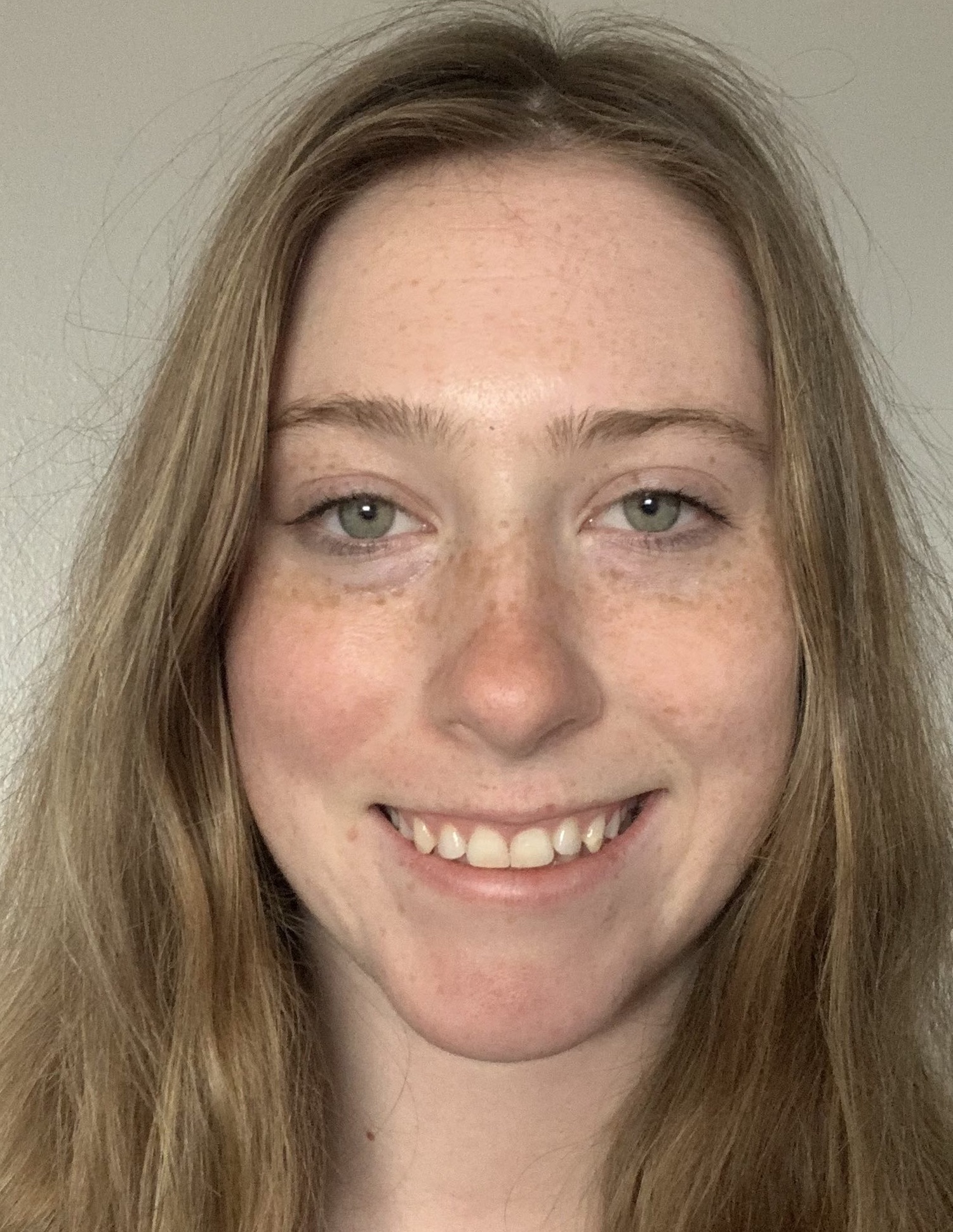
Brice Tingle

Morgan Himes


Brice Tingle

Morgan Himes

Our Galaxy's center, the CMZ, has denser gas than the Galactic average
Cold Dust
Hot, ionized gas
Hot dust/PAHs
Hot, ionized gas
Hot dust/PAHs
The proto-Super Star Cluster Sgr B2 is forming in the CMZ
The proto-Super Star Cluster Sgr B2 is forming in the CMZ
Comparison of Sgr B2 (one cloud, 200 pc2) with
ALMA-IMF (15 SFRs, 53 pc2)

3mm catalog → Simplistic mass inferences
At this sensitivity, all are M>8⊙ YSOs
Mtot = 8 M⊙
∫0∞ M N(M) dM
∫8∞ M N(M) dM
∫8∞ M N(M) dM
= 96 M ⊙
We can do better:
Long-baseline observations ID individual low-mass YSOs
69 → 350
Long-baseline observations ID individual low-mass YSOs
69 → 350
Jeff+, in prep
Jeff+, in prep
Jeff+, in prep
